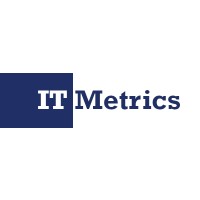Unlocking Business Success Understanding Key IT Metrics for Optimal Performance

Unlocking Business Success Understanding Key IT Metrics for Optimal Performance
In todays digitally driven world Information Technology IT serves as the backbone of modern businesses. The performance efficiency of IT systems play a pivotal role in determining an organizations success. To measure optimize IT performance businesses rely on various key metrics These metrics offer valuable insights into the health functionality effectiveness of IT operations
Understanding IT Metrics
IT metrics are quantifiable measures used to assess different aspects of IT operations. These metrics provide a comprehensive view of performance allowing businesses to gauge efficiency identify areas for improvement make data-driven decisions. They encompass diverse areas within IT including infrastructure, security applications user experience.
Key Categories of IT Metrics
Performance Metrics
Performance metrics focus on the speed responsiveness reliability of IT systems. Metrics like uptime response time, and throughput evaluate the efficiency of servers networks and applications. Monitoring these metrics ensures optimal performance helps in preemptive issue resolution minimizing downtime that could impact business operations
Security Metrics
Security metrics are crucial in todays landscape of cyber threats. They assess the effectiveness of security measures identify potential vulnerabilities Metrics such as the number of security incidents time to detect respond to threatsd compliance adherence provide insights into the organizations security posture.
Availability Metrics
Availability metrics measure the accessibility reliability of IT services. Metrics like Mean Time Between Failures MTBF Mean Time to Recover MTTR determine how quickly systems can recover from failures or downtime, ensuring minimal disruption to business continuity.
Capacity Planning Metrics
These metrics aid in forecasting and optimizing resources to meet current and future demands. Metrics such as utilization rates growth trendscapacity thresholds assist in scaling IT infrastructure proactively preventing performance bottlenecks during peak usage.
User Experience Metrics
Usercentric metrics evaluate the satisfaction experience of endusers. Metrics like Net Promoter Score NPS user adoption rates feedback surveys help understand user perceptions allowing IT teams to enhance systems for better usability and functionality.
Importance of IT Metrics in Business Success
Performance Improvement
Tracking IT metrics enables businesses to identify areas for enhancement, leading to optimized system performance and increased efficiency.
Risk Mitigation
Security compliance metrics aid in identifying vulnerabilities and proactively mitigating risks safeguarding the organization against potential threats.
Resource Optimization
Capacity planning metrics assist in resource allocation ensuring optimal usage and costeffectiveness.
Enhanced DecisionMaking
Data-driven insights from IT metrics empower informed decisionmaking aligning IT strategies with business objectives.
IT metrics are indispensable tools that enable organizations to assess optimize align their IT infrastructure with business goals. By leveraging these metrics across various domains businesses can enhance performance bolster security drive overall success. Continuous monitoring and analysis of IT metrics remain essential in adapting to evolving technological landscapes and ensuring sustained business growth.
IT metrics serving as quantitative measures to assess various aspects of Information Technology operations offer numerous benefits to organizations aiming to optimize their IT performance align it with business objectives Here are several key benefits of utilizing IT metrics
Performance Optimization
IT metrics provide insights into system performance helping organizations identify inefficiencies bottlenecks or areas needing improvement. This information enables proactive optimization of IT infrastructure applications networks to enhance speed reliability overall performance.
Resource Allocation and Efficiency
By tracking metrics related to resource utilization businesses can effectively allocate resources, preventing over-provisioning or underutilization. This optimization leads to increased efficiency cost savings across IT operations.
Risk Management and Security Enhancement
Metrics focused on security compliance incident response help in identifying vulnerabilities and assessing the effectiveness of security measures. This enables proactive risk management ensuring the protection of sensitive data reducing the likelihood impact of cybersecurity threats.
Improved Decision Making
Data driven insights derived from IT metrics empower informed decision-making. Leaders can make strategic IT decisions aligned with business goals based on concrete quantifiable information rather than assumptions or guesswork.
Business Continuity and Disaster Recovery
Metrics related to system uptime downtimed recovery times are crucial for ensuring business continuity. Understanding these metrics aids in designing robust disaster recovery plans and strategies minimizing disruptions their potential impact on operations.
Enhanced User Experience and Satisfaction
User-centric metrics such as user feedback adoption rated response times provide valuable insights into the end-user experience. By analyzing these metrics organizations can make improvements to IT systems ensuring a seamless and satisfactory user experience.
Strategic Alignment and Goal Achievement
IT metrics help in aligning IT initiatives with broader business objectives. By monitoring analyzing metrics that directly impact business goals organizations can ensure that IT investments and strategies contribute effectively to the companys overall success.
Continuous Improvement and Innovation
Regular monitoring and analysis of IT metrics facilitate a culture of continuous improvement. By identifying areas for enhancement organizations can innovate and adapt their IT infrastructure and processes to stay competitive and meet evolving business needs.
Benchmarking and Performance Evaluation
IT metrics provide a basis for benchmarking against industry standards or best practices. Comparing performance metrics against benchmarks helps in evaluating progress, setting realistic goals identifying areas where improvements are necessary.
In summary leveraging IT metrics empowers organizations to optimize performance manage risks, make informed decisions,enhance user satisfaction align IT strategies with broader business objectives. Continuous monitoring analysis action based on these metrics are key to driving efficiency, innovation sustained success in the rapidly evolving landscape of technology and business.